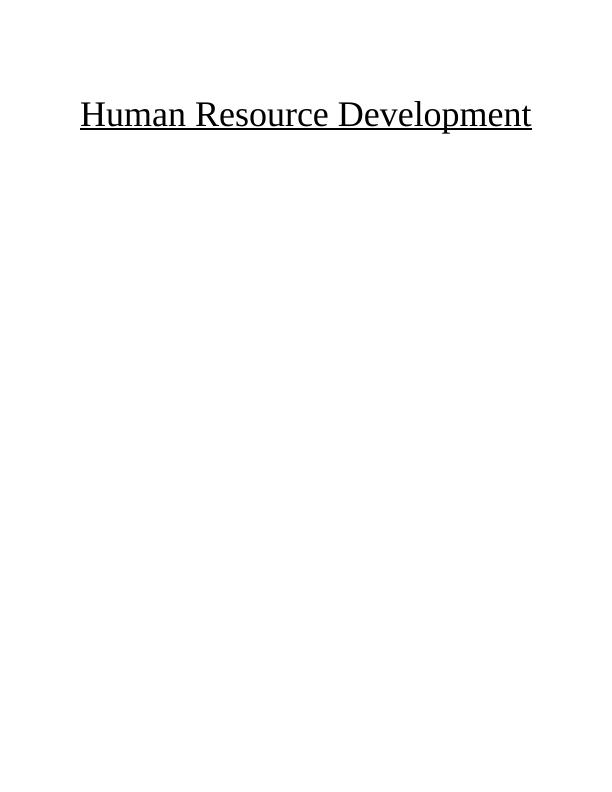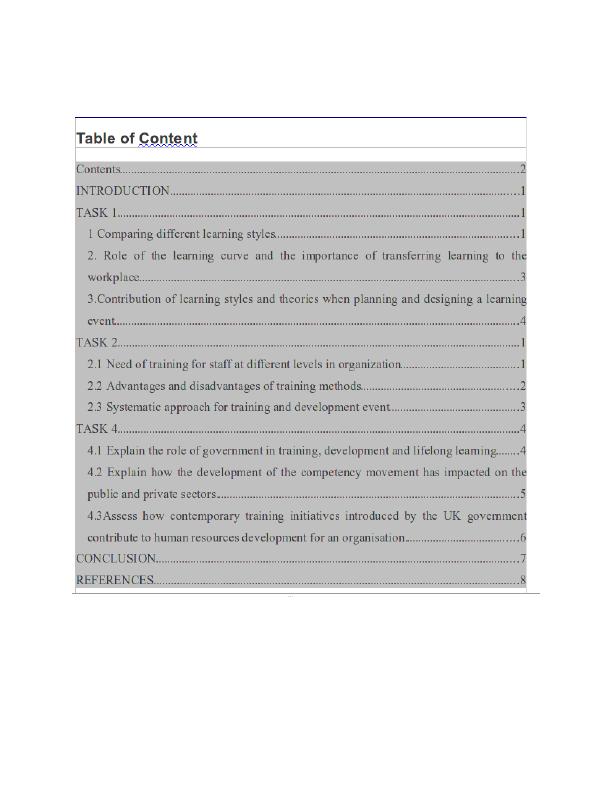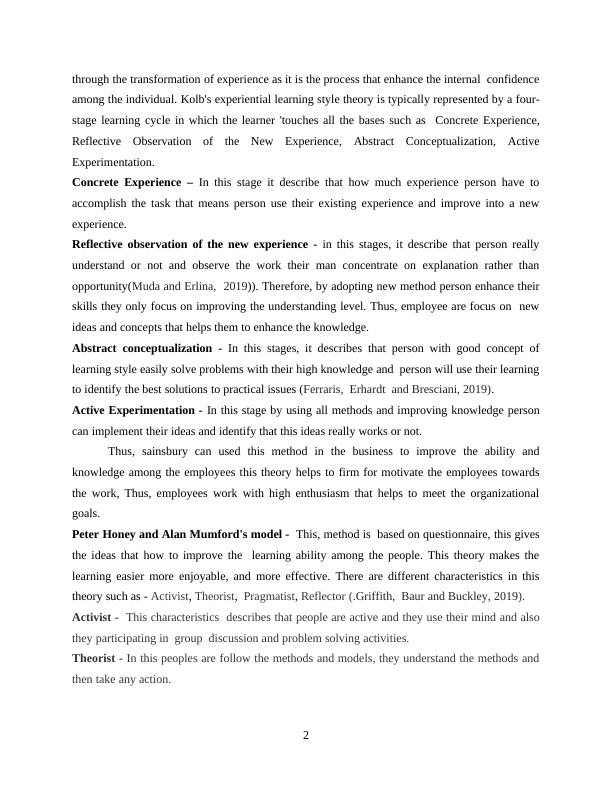Human Resource Development Purpose
20 Pages5284 Words37 Views
Added on 2021-02-20
Human Resource Development Purpose
Added on 2021-02-20
ShareRelated Documents
Human Resource Development


INTRODUCTIONHuman resources development is the tool which is used in the business for the purposeof develop and improve the employees skills, knowledge, and abilities. Thus, this tool helps toemployees for develop their personal and organizational skills, knowledge, and abilities thathelps in their personal and professional carrier (Chams and García-Blandón, 2019). It includesdifferent opportunities for employees such as- training programme, employee carrierdevelopment, performance management and development coaching etc. This all process helpsfor develops employee strengths and their ability to contribute in the organization and helps toachieve the overall organization goal. The present report is based on human resource development of Sainsbury. It is the secondlargest chain of supermarkets in the United Kingdom that provides the different types consumergoods to the consumers.Thus, the report will cover the various ways of improving the employeesability such as – explain the different learning theories and learning styles, and importance oflearning curve, plan and designs training and development programme, advantage anddisadvantages of training methods. Lastly, the report will evaluate a training event and describethe government-led skills development initiatives. TASK 11 Leaning styles is refers to improve the ability and knowledge among the person that helpsto improve the professional carrier as well improve their future. Thus, learning style is themethod a person uses to learn and understand the different things (Hughes and Gosney, 2019). Aperson can use the different learning methods that aids to maximize the understanding level ofperson. Therefore, to improve the ability employees may use the individual learning styles byanalyse that which types of methods, activities and environment help them to learn best. Thereare different types of learning styles such as - Kolb’s learning style inventory; Myers BriggsType Indicator, Neil Fleming's VAK/VARK model, Peter Honey and Alan Mumford's model. Thus, to better understanding the learning theories used the Kolb’s learning style inventory andPeter Honey and Alan Mumford's model (Hughes and Gosney, 2019).Kolb’s learning style inventory - This styles is published in 1984 it is based on experientiallearning model and there have four separate learning model that helps to person to improve theirindividual growth. Thus, learning is provided the knowledge among the employees is created1

through the transformation of experience as it is the process that enhance the internal confidenceamong the individual. Kolb's experiential learning style theory is typically represented by a four-stage learning cycle in which the learner 'touches all the bases such as Concrete Experience,Reflective Observation of the New Experience, Abstract Conceptualization, ActiveExperimentation.Concrete Experience – In this stage it describe that how much experience person have toaccomplish the task that means person use their existing experience and improve into a newexperience. Reflective observation of the new experience - in this stages, it describe that person reallyunderstand or not and observe the work their man concentrate on explanation rather thanopportunity(Muda and Erlina, 2019)). Therefore, by adopting new method person enhance theirskills they only focus on improving the understanding level. Thus, employee are focus on newideas and concepts that helps them to enhance the knowledge. Abstract conceptualization - In this stages, it describes that person with good concept oflearning style easily solve problems with their high knowledge and person will use their learningto identify the best solutions to practical issues (Ferraris, Erhardt and Bresciani, 2019).Active Experimentation - In this stage by using all methods and improving knowledge personcan implement their ideas and identify that this ideas really works or not. Thus, sainsbury can used this method in the business to improve the ability andknowledge among the employees this theory helps to firm for motivate the employees towardsthe work, Thus, employees work with high enthusiasm that helps to meet the organizationalgoals. Peter Honey and Alan Mumford's model - This, method is based on questionnaire, this givesthe ideas that how to improve the learning ability among the people. This theory makes thelearning easier more enjoyable, and more effective. There are different characteristics in thistheory such as - Activist, Theorist, Pragmatist, Reflector (.Griffith, Baur and Buckley, 2019).Activist - This characteristics describes that people are active and they use their mind and alsothey participating in group discussion and problem solving activities. Theorist - In this peoples are follow the methods and models, they understand the methods andthen take any action. 2

End of preview
Want to access all the pages? Upload your documents or become a member.
Related Documents
Systematic Approach to Training and Development in Human Resource Developmentlg...
|18
|5473
|351
Theories, Principles, and Models in Education and Traininglg...
|10
|2902
|90
Human Resource Developmentlg...
|12
|451
|253
Role of Learning Curve and Importancelg...
|15
|4856
|209
Systematic Approach to Plan Training and Development for Employees at Levelslg...
|15
|4672
|134
Assignment Human Resource Development(HRD)lg...
|17
|4680
|51
